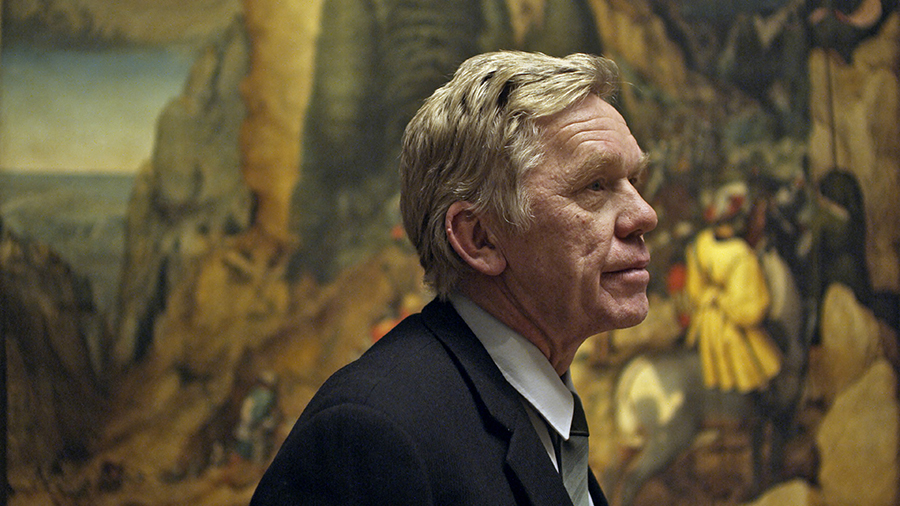
On Sept. 13, Filmworks will show the much-praised Museum Hours by Jem Cohen, best known as an “experimental” (or art) documentary filmmaker. It’s a film about an art museum guard, Johann (Bobby Sommer), and a Canadian traveler, Anne (Mary Margaret O’Hara). Anne visits the museum and the two talk art and start to bond. The backdrop is the famous Kunsthistorisches Museum in Vienna where masterpieces by Bruegel, Rembrandt, and other famous European masters hang. Anne is in Vienna for the first time, to say goodbye to her dying cousin; Johann senses the woman would like to be shown around a bit.
They visit Viennese historical landmarks, take coffee together, chat amiably and easily, and get along. But this is not a romance. Not a Hollywood movie. Instead, I call it a feature-length art film, with a real plot about the renewing power of fresh acquaintance. It also offers us much to think about in the way of opposites.
Johann needs to get out of the museum and into the world. He lives a very solitary life, mainly playing online poker (at home, not in the museum). Thus two opposites: solitude and companionship, art and life. There is also a bold cinematic opposition. The museum scenes are shot with a high-end video camera, and the exteriors with a plain and aged 16mm movie camera. Cohen is able to show us telling details in the paintings; meanwhile, the exteriors are muted, just a bit less sharp than what the digital camera can manage.
When you see a feature film by someone with vast experience in making art films, you must ask: What is gained by using two cameras, one hi-res, the other of limited resolution? Is the video camerawork more “real” or not? But great paintings are not “real” — they are works of art. Meanwhile, are the exterior shots less “real,” more dreamlike, or undeserving of sharpness? But the subjects, certainly, are real.
I invite you to watch a couple of Cohen’s earlier art films online, for context. His 1996 film poem Lost Book Found is a 37-minute tour of New York’s blessed banality. You’ll see things like emotive, homemade lost-dog signs taped to phone booths and cheap wind-up toy soldiers for sale crawling across sidewalk battlefields — made very special by Cohen’s keen sense of the sadness of urban existence.
Also watch his beautiful 2006 film Blessed are the Dreams of Men, eight minutes of working-class men sleeping on a commuter train, heads slumped against fogged-up winter windows that randomly obscure a wooded dream landscape slipping by.
It’s not such a big jump from these films to Museum Hours — and yet it is, too. The earlier films will not appeal to everyone. They are plotless, without narrative development. His current film is feature-length fiction, has a plot of sorts, and it unfolds in time, like any story.
So, I return to the original question: What would a feature made by an art filmmaker look and feel like? It might feel like Museum Hours, familiar and accessible, but yet not. But don’t get the idea that Museum Hours is only an arty exercise. It is, however, subtle. Nearly all reviewers praise the film for its elusive humanity, something of course missing from most Hollywood fare. In his review, critic Calum Marsh of the The Village Voice zooms in on one scene:
“The centerpiece is an 11-minute sequence in which a playful guest lecturer guides a tour group through the museum’s Bruegel exhibit, which Johann watches from afar. Its mixture of observation, insightfulness, and above all curiosity encapsulates much of the film’s appeal. The guide’s assertion that Bruegel’s scenes of peasant life are less quaint and more radical than they may appear suggests a built-in counterargument to those inclined to dismiss Museum Hours for its apparent slightness. And, of course, it’s true: Cohen is working well outside the realm of quaintness. He has made a film of such intelligence and originality that ‘radical’ seems the only accurate word.”
Jim Piper is a Filmworks board member, a filmmaker, and a retired film studies instructor.
